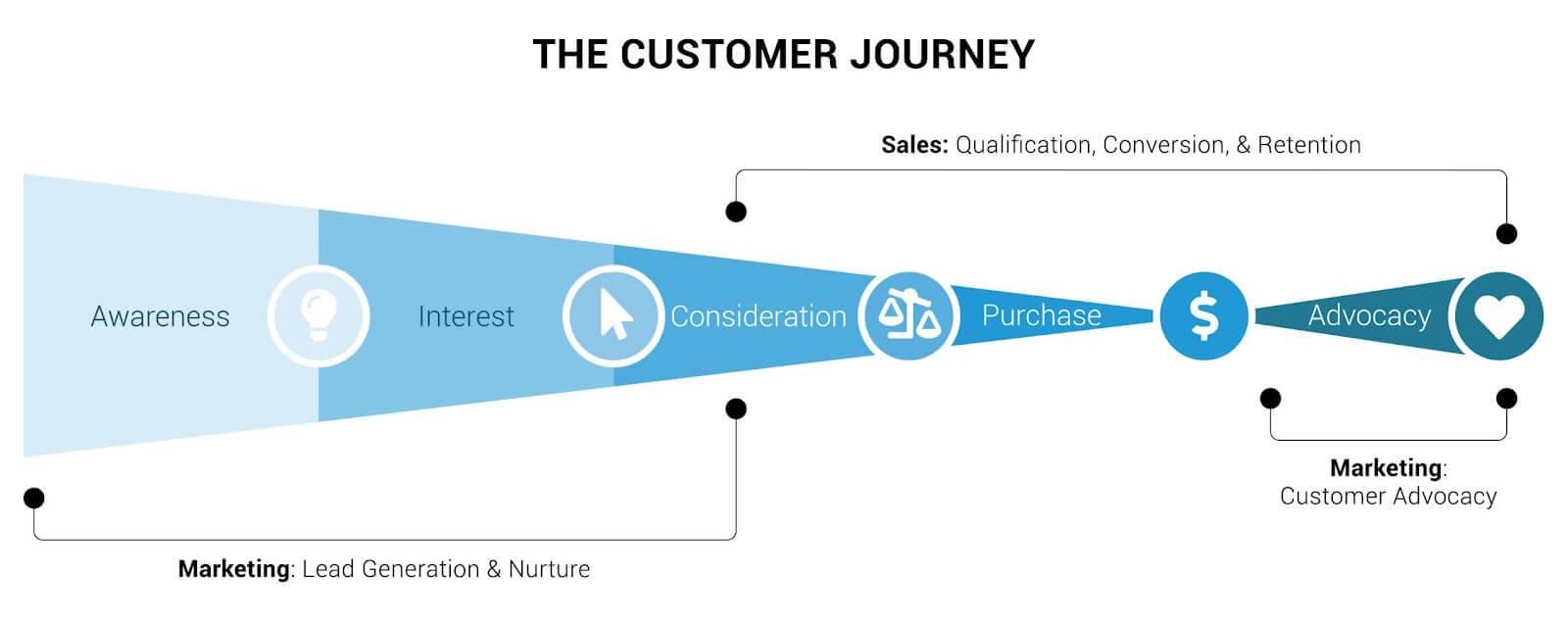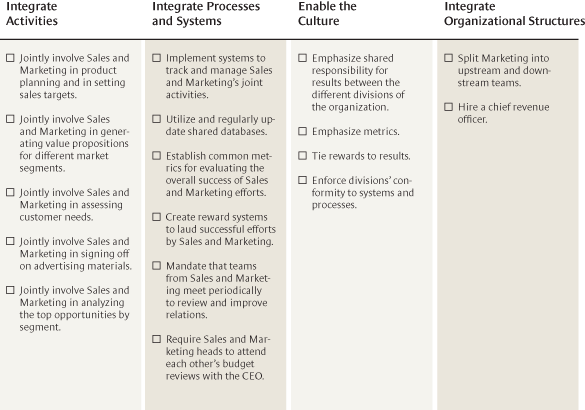In this blog post, we will explore some tips for fostering collaboration between sales and marketing teams in English to help bridge the communication gap and create a more aligned approach toward achieving common goals. By the end of this blog post, you will better understand how to break down the barriers between your sales and marketing team to create an effective team that works together towards the same objective: driving revenue growth.

Introduce Perks and Bonuses for Both Teams
One effective way to foster collaboration between sales and marketing teams is by introducing perks and bonuses for both teams. Offering rewards tied to communal goals rather than individual targets is important. This creates a sense of shared ownership and fosters a team-focused culture. Sharing profits or commissions based on team performance can also encourage collaboration and boost morale.
However, ensuring that the incentives are fair and aligned with the company’s goals is crucial. Ultimately, the goal is to create an environment where both sales and marketing teams work together towards a unified vision rather than competing against each other. You can create a more cohesive and effective team dynamic by incentivizing collaboration.

Create Shared Goals
To foster collaboration between sales and marketing, it is crucial to establish shared goals that both teams are working towards. This means defining clear objectives that align with the company’s overall strategy and ensuring that both teams understand their role in achieving those goals. By creating a sense of ownership and shared responsibility, sales, and marketing teams can work together more effectively toward a common purpose.
Additionally, establishing shared goals can help to break down silos and encourage cross-functional collaboration, as everyone is working towards a common end. As part of this process, it’s important to create team-oriented goals that reflect each department’s unique strengths and capabilities and to establish metrics for measuring progress and success. By setting shared goals and working towards them together, sales and marketing teams can foster a culture of collaboration and mutual support that leads to greater success and achievement.

Identify and Bridge Communication Gaps
Effective communication is essential for any collaborative effort, and when it comes to sales and marketing, identifying and bridging communication gaps is crucial. This entails acknowledging and countering any differences in language, paradigms, and habits between the two teams. Developing a common language is key to this process, as it can prevent misunderstandings and facilitate smoother interactions.
Encouraging dialogue and understanding can also help each team to appreciate the other’s perspective, leading to better alignment and cooperation. By promoting cross-functional collaboration, sharing data and insights, fostering mutual trust and respect, and celebrating successes together, sales and marketing can work together synergistically and achieve greater results.

Develop a Common Language
To effectively collaborate, Sales and Marketing teams must develop a common language that enables them to communicate effectively. This requires both teams to understand each other’s terminology, including buzzwords, acronyms, and industry-specific jargon. By using a shared vocabulary, Sales and Marketing departments can ensure that messaging is consistent throughout the customer journey, which helps build trust and credibility with prospects.
The best way to develop a common language is through regular meetings where both teams can discuss and agree on specific terms and how to use them in their efforts. By making this a priority, Sales, and Marketing teams can eliminate misunderstandings and promote a more cohesive approach to building brand awareness and generating leads.

Encourage Dialogue and Understanding
Encouraging dialogue and understanding between sales and marketing teams is crucial in fostering collaboration. This begins with identifying the communication gaps between the departments and addressing them. Developing a common language, whether it be industry terminology or internal jargon, can also facilitate better communication. Once communication is established, it’s important to encourage open dialogue and understanding. Sales and marketing teams should take the time to learn about each other’s roles, goals, and challenges.
This can be achieved through team-building activities or cross-functional projects. By promoting mutual trust and respect, the two departments can work together towards shared goals and celebrate successes together. Sharing data and insights is also key in creating transparency and fostering collaboration. By pooling their resources and working together, sales and marketing can achieve greater success and drive business growth.

Promote Cross-Functional Collaboration
One way to foster collaboration between sales and marketing is through cross-functional collaboration. This involves bringing together individuals from each team with different skill sets, perspectives, and experiences to work on a common goal. Doing so allows them to learn from each other, brainstorm innovative ideas, and develop a greater understanding and appreciation for each other’s roles. Encouraging cross-functional collaboration can be achieved by providing regular opportunities for teams to work together, such as through joint project teams, brainstorming sessions, or problem-solving workshops.
This promotes collaboration, strengthens the overall team dynamic, and boosts morale. A collaborative team is a successful one that can achieve company goals and exceed expectations.

Share Data and Insights
Sharing data and insights is crucial for fostering collaboration between sales and marketing teams. By doing this, both teams can better understand their target audience and make informed decisions. This means that sales can provide feedback to marketing, informing them of what resonates with customers, while marketing can use this information to create more effective campaigns. By sharing data, the teams can identify potential gaps or issues and work together to find solutions.
This can help prevent departmental silos and ensure everyone is working towards the same goals. Overall, sharing data and insights allows both sales and marketing to work smarter, not harder, and achieve greater success together.

Foster Mutual Trust and Respect
Building mutual trust and respect is essential for establishing a collaborative culture between sales and marketing teams. A lack of trust and respect can hinder effective collaboration, leading to disjointed efforts and missed opportunities. To foster mutual trust and respect, managers should encourage open communication, empathize with team members, and prioritize transparency.
Additionally, team-building activities can build camaraderie within and between departments. By prioritizing mutual trust and respect, sales and marketing teams can work together effectively towards common goals, ultimately driving the company’s success.

Encourage Team Building Activities
Encouraging team-building activities is essential to foster collaboration between sales and marketing teams. Engaging in fun, non-work-related activities such as team lunches, happy hours, or outdoor adventures can help team members forge stronger relationships and build trust. As a result, team members are more likely to be open to sharing ideas and working together towards common goals.
These activities can also help break down silos and promote cross-functional collaboration, which is essential for business success. By celebrating successes together, teams can feel a sense of camaraderie that transcends departmental boundaries, leading to improved collaboration in the long run. Ultimately, investing in team-building activities can lead to increased productivity, better decision-making, and a more positive work environment for all.

Celebrate Successes Together
The final step in fostering collaboration between sales and marketing teams is to celebrate successes together. With a shared sense of achievement, it’s easier for departments to feel connected and connected to one another. By celebrating as a unit, both teams can feel a sense of joint accomplishment and keep momentum. This can mean acknowledging individual successes, as well as team wins, through company-wide recognition programs, team outings, or shared meals.
To drive collaboration, businesses should encourage ongoing celebrations that suit different working environments and employee preferences. By making it a habit to celebrate successes together, sales and marketing teams can build a strong foundation for continued success.

Conclusion
In conclusion, fostering collaboration between sales and marketing is essential for driving business success. By introducing perks and bonuses, creating shared goals, identifying and bridging communication gaps, developing a common language, encouraging dialogue and understanding, promoting cross-functional collaboration, sharing data and insights, fostering mutual trust and respect, encouraging team-building activities, and celebrating successes together, organizations can create a cohesive environment that supports the needs of both teams.
By working together, sales and marketing can provide a better customer experience and ultimately drive revenue growth for the business. Through these tactics, organizations can foster a culture of collaboration that supports long-term success.
Frequently Asked Questions
How can marketing collaborate with sales?
Marketing can collaborate with sales by establishing open lines of communication, sharing data and insights, and aligning messaging and goals. Regular meetings and feedback sessions can facilitate collaboration, while joint projects and cross-training initiatives can foster a deeper understanding between the two teams. By working together to develop integrated strategies and campaigns, marketing and sales can maximize their impact and drive business growth.
How can sales and marketing work together to generate leads?
Sales and marketing can work together to generate leads by aligning their efforts and leveraging their respective strengths. Marketing can create targeted campaigns to generate awareness and interest, while sales can provide valuable insights and feedback on lead quality. By establishing a structured lead handoff process, both teams can ensure seamless communication and follow-up, ultimately converting leads into customers through a collaborative approach.
Why do marketing and sales work together?
Marketing and sales should work together because they share a common goal: driving revenue growth and business success. When these teams collaborate, they can leverage their unique perspectives and expertise to create a cohesive customer journey. Marketing supports sales by generating quality leads and creating brand awareness, while sales provides valuable feedback and insights to refine marketing strategies. By aligning their efforts, marketing and sales can deliver a seamless and compelling customer experience that translates into increased conversions and revenue.
How are sales and marketing interconnected?
Sales and marketing are interconnected through a symbiotic relationship. Marketing lays the foundation by creating brand awareness, generating leads, and nurturing customer relationships. Sales, on the other hand, leverages marketing efforts to close deals and drive revenue. The insights and feedback from sales inform marketing strategies, ensuring they remain relevant and effective. Together, sales and marketing form a cohesive unit that drives customer acquisition, retention, and revenue growth.
How can marketing and sales best work together?
Marketing and sales can best work together by fostering open communication, establishing shared goals, and leveraging each other’s strengths. Regular meetings and feedback sessions allow for effective collaboration and alignment. Joint projects and cross-training initiatives enable both teams to develop a deeper understanding of each other’s roles and challenges. By combining their expertise and insights, marketing and sales can create integrated strategies, execute impactful campaigns, and achieve shared objectives.
What is lead generation in sales and marketing?
Lead generation in sales and marketing refers to the process of identifying and attracting potential customers or leads who have shown interest in a product or service. It involves various marketing activities, such as content creation, advertising, social media engagement, and lead capture forms. The goal is to generate a pipeline of qualified leads that can be nurtured and eventually converted into paying customers through the efforts of the sales team.
How do you combine marketing and sales?
To combine marketing and sales effectively, organizations should foster collaboration and create an integrated approach. This involves aligning messaging and branding, establishing a structured lead management process, and sharing data and insights. Regular communication and joint meetings allow for the exchange of feedback and the refinement of strategies. By breaking down silos and encouraging cross-functional collaboration, marketing and sales can create a unified front that drives customer engagement and business growth.
How does product marketing and sales work together?
Product marketing and sales work together to drive the success of a product or service. Product marketing provides the sales team with the necessary tools, resources, and messaging to effectively communicate the value proposition of the product to customers. Sales, in turn, provides valuable feedback on customer preferences, objections, and market trends, enabling product marketing to refine strategies and positioning. By collaborating closely, product marketing and sales can optimize product messaging, target the right audience, and drive sales growth.



